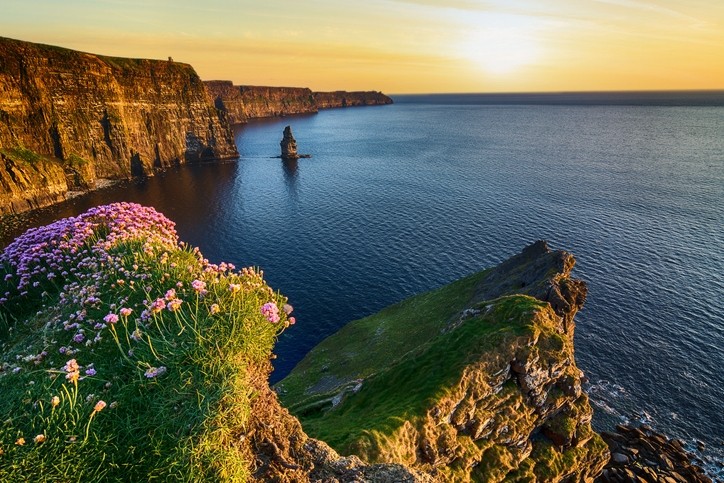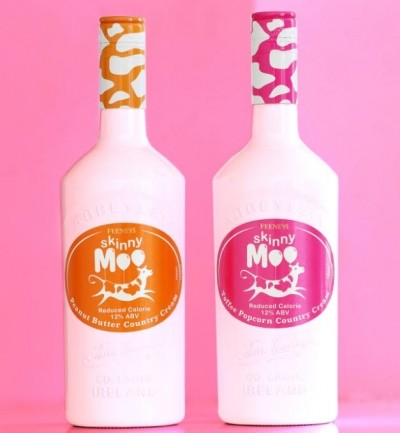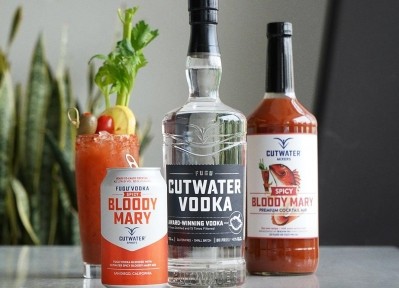Whiskey and cream liqueur drive Irish beverage exports

The volume of Irish beverage exports grew 4% in 2018, according to Bord Bia, the Irish food board.
Irish whiskey is enjoying record growth – now accounting for 42% of total beverage exports – thanks to global interest in the whiskey category. In 2018 the value of exports increased by €45m ($51m) to €623m ($712m).
“Whiskey consumption levels globally are expected to exceed the projected 10m cases by end 2018 for the first time. This represents an increase of 9% in volume on 2017 and almost 12% in value terms,” says Bord Bia.
Top destinations: US and UK
Total Irish agri-food exports (which includes categories such as forestry and oils) reached €13.6bn ($15.5bn) in 2018, according to Bord Bia's Export Performance and Prospects 2018/2019 report.
Irish beverage exports were valued at €1.5bn ($1.7bn), a year on year decline of 1%, but the sector is showing volume growth of 4%.
The US is the dominant destination for Irish beverage exports: with €567m ($648m) - 38% of the total -destined for the US in 2018. Of this, 60% was whiskey, which increased in value of exports to the US by 9% in 2018.
Liqueurs also saw a year of growth: 30% of the export total to the US was accounted for by liqueurs.
The UK is also a large market for Irish beverage exports, accounting for 24%, a slight decline from 26% in 2017. Juice and whiskey exports to the UK performed notably in 2018, increasing 20% and 25% respectively.
However, Bord Bia warns that there is a clear ‘over-dependence’ on exports to the US; while Brexit brings a number of uncertainties for the UK market.
'The outcomes of Brexit are unlikely to have a positive impact on any of the beverage categories'
“The US market will continue to retain its importance to the category and Bord Bia will work to protect and build on the business there," says the food board.
"However, investment will be required to forge new markets and build on emerging ones for the category to ultimately reduce that dependence.
"The outcomes of Brexit are unlikely to have a positive impact on any of the beverage categories. Bord Bia is working with exporters on their supply chains in relation to Brexit and in line with Market Prioritisation work to expand those destinations for Irish beverage companies.”
Other destinations
Ireland sees potential from countries such as South Africa, Taiwan and Thailand.
“South Africa is the largest destination on the continent of Africa and was the destination for €15m ($17m) in beverage exports in 2018, 94% of which was whiskey," notes Bord Bia. "Emerging consumers with disposable income are spending more on imported drinks in South Africa and Irish whiskey exporters are well placed to take advantage over the coming years.
Meanwhile, Bord Bia notes some Asian markets such as Taiwan and Thailand show 'significant promise'.
"Irish whiskey exports to these markets rose by 44% and 22% respectively, albeit from a low base in 2018," it says. "Irish whiskey saw strong growth as people start to broaden their interests beyond Scotch blends and single malts are becoming more mainstream."
Bord Bia on beverage trends
- Greater consciousness of health and wellbeing among consumers.
- New product development with a greater investment in alcohol-free, adult beverages that target the abstaining drinker.
- Millennial and Gen Z consumers will demand greater corporate responsibility from the supplier, insisting on gender-neutral targeting and sustainability cues.
Good news for gin, bad news for cider
While whiskey is the star performer in the Irish beverage portfolio, Irish cream liqueur has seen a notable rise in 2018. This has been driven by private label contracts and new product development, as well as increased interest from the UK (up 36%), Africa (30%) and Australia (more than 100% from a low base). The value of cream liqueur exports rose by 5% in 2018 to €342m.
While beer exports to the EU were up considerably, a decrease in exports to North America meant the overall category value has declined.
“Exports of beer declined in value by 2% in 2018 to €268m ($306m)," says Bord Bia. "During the same period there was an overall increase in volume of beer exports of 9%, with a particularly positive performance in exports to the EU.
“Beer exports to the continental EU are up more than 20% to over €70m ($80m) in 2018, and the continent now accounts for over 30% of Irish beer export values.
“The sources of lost exports in beer were the North American region which saw a decline of 16% to €56m ($64m), and Asia which saw a 20% decline in value to just over €5m ($5.7m)."
Cider has suffered in the important Irish and UK markets. Despite good summer weather, it decreased 20% in value and 16% in volume.
Like whiskey, gin is benefiting from increased buzz around the category internationally. Irish gin saw an increase of 24% in volume exports, albeit from a low base. The category is set to be worth more than €5m ($5.7m) in exports in 2018.
“As the Irish gin supply base expands in response to global trends, double-digit growth is recorded in the UK, South Africa, Italy and Germany and notable growth of 8% is reflected in consumption of Irish gin in Spain. The Irish category is young and is in a position to build its exports at present but it is hoped to capture some of that growth in 2019–20.”










